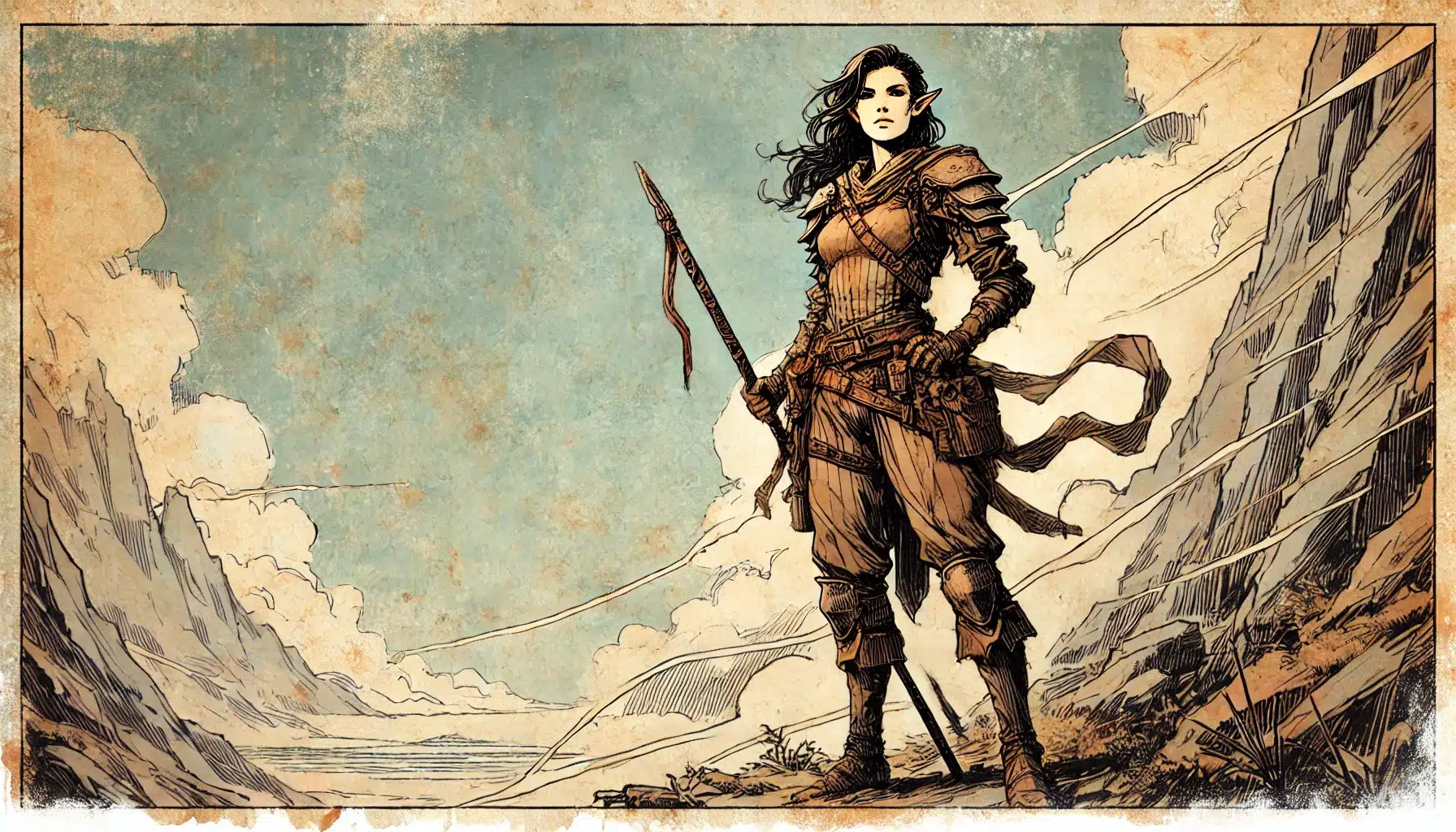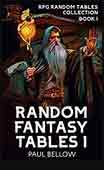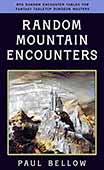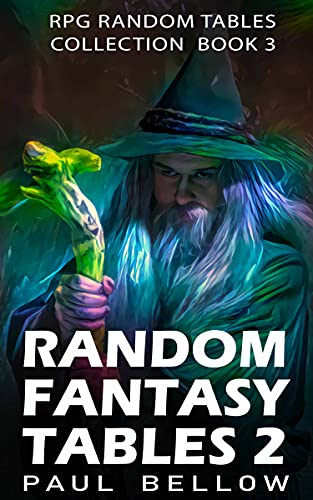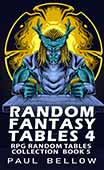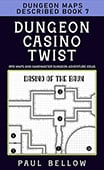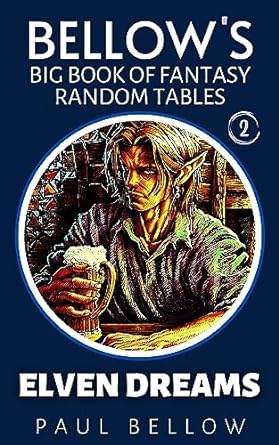The winds of change are blowing through the worlds of Dungeons & Dragons, and with the upcoming Eberron: Forge of the Artificer, an old favorite is quietly making a return. Half-Elves, beloved by generations of players for their flexibility and dramatic flair, all but vanished from the 2024 Player’s Handbook amid Wizards of the Coast’s efforts to reimagine “half” species for a more inclusive game. But in the clockwork-and-crystal towers of Eberron, these storied characters are stirring once more—reborn as the Khoravar.
This isn’t a simple re-insertion of the familiar half-elf mechanics. Instead, the Khoravar present an elegant sleight of hand: a species with deep roots in the lore of Eberron, returning not as a hybrid but with a fully realized cultural and biological identity. While the rest of the D&D multiverse has left “Half-Elves” behind in name and concept, Eberron has always treated the Khoravar as their own people, with traditions, destinies, and ambitions tangling through the setting’s political and magical landscape.
This maneuver is not just a game of semantics. Jeremy Crawford, D&D’s lead rules designer, stated in 2023 that the “half” lineage was retired due to its troubling origins in fantasy literature—remnants of otherness that created uncomfortable implications for modern gamers. By reframing the Khoravar as a distinct people, Forge of the Artificer respects both the modern imperative for inclusivity and the player nostalgia for Half-Elf characters.
Why does this matter? For one thing, it gives the massive Eberron fanbase new and returning options for expression at the table, without sacrificing the progressive goals of D&D’s current direction. For another, it’s a master class in how setting-specific lore can enable elegant solutions: by rooting the Khoravar in Eberron’s own cultural tapestry, Wizards of the Coast sidesteps old pitfalls and invites players to create characters unburdened by baggage, rich in nuance, and ready for intrigue.
Who Are the Khoravar in Eberron?
Long before recent debates about species terminology, Eberron lore had carved out a unique space for the Khoravar. In the streets of Sharn and the halls of the Dragonmarked Houses, the Khoravar are not awkward children of disparate worlds—they are proud inheritors of a culture shaped equally by their origins and their ambitions. While their ancestry traces back to the union of humans and elves, centuries of distinct lineage, custom, and magic have set them apart as a people all their own.
The Khoravar occupy a distinctive rung on the social ladder of Eberron. Neither entirely accepted by elves nor by humans, they have turned this outsider status into an engine for adaptability and influence. Nowhere is this clearer than in the great Dragonmarked Houses: House Lyrandar, masters of the skies, and House Medani, keepers of secrets, are both Khoravar-led institutions. Those dragonmarks—hereditary sigils of power unique to Eberron—infuse Khoravar society with wealth, status, and a sense of destiny that’s impossible to untangle from the setting’s politics.
Try my AI Tabletop RPG generators...and an extensive library of content!
In roleplaying terms, what sets Khoravar apart is their bicultural heritage woven into something all their own. Many are fluent in both Common and Elvish, but their idioms, art, and traditions diverge in lush and surprising ways. Often called “half-elves” by outsiders, the Khoravar themselves cultivate a distinct identity, one that is neither divided nor diminutive.
Another crucial distinction: in Eberron, game rules treat the Khoravar as a people with their own set of traits—they are not created by mixing “base” human and elf mechanics. They emerge, instead, as a fully realized option, with unique traits, powers, and a vibrant role in the world’s cultural landscape. The implication is clear: you’re not playing a hybrid; you’re playing a Khoravar.
Ultimately, the Khoravar in Eberron are a testament to how the complexities of identity—heritage, belonging, ambition—can be explored through the lens of fantasy, without falling back on tired tropes or problematic shorthand. Their story is one of becoming, and of carving a place in a world where difference is both celebrated and exploited.
Khoravar Cultural and Mechanical Traits in Eberron:
- Born to and recognized as a distinct lineage rather than a hybrid
- Deep ties to Dragonmarked House Lyrandar (airships, elemental binding) and House Medani (investigation, safety)
- Innate bilingualism—most speak both Common and Elvish fluently
- Reputations for negotiation, mediation, and diplomacy
- Fluid social identity, able to navigate between human and elven traditions
- Unique religious practices—often blending human faiths and elven ancestor worship
- Play a key role in Eberron’s social and political hierarchies, especially among the merchant elite
- Possess their own family structures, customs, and coming-of-age rituals
- Can manifest powerful dragonmarks, offering access to rare magic
- Positioned uniquely in Eberron’s sometimes rigid caste system
- Socially mobile—often become adventurers, explorers, and agents of change
- Aesthetic traditions and fads distinct from both parent cultures
As Wizards of the Coast delicately reinvent the “half-elf” for a new age, Eberron’s lore presents a ready solution—the Khoravar already exist as something more than a stopgap or a compromise. They are a living, breathing example of how D&D can respect roots while reaching for a more expansive future.
⚔️ Fantasy RPG Random Tables Books
Make life as a Gamemaster easier…
If you play Dungeons & Dragons, Pathfinder, or other fantasy RPGs, this
RPG random tables series
is packed with encounters, NPCs, treasure, and more. Available in eBook or print—either way, you’ll have a wealth of adventure ideas at your fingertips.
This allows Eberron’s version of the “Half-Elf” to serve two masters: honoring the narrative and game mechanics that old-school fans love, while presenting a vision of character creation untethered from the loaded language and limitations of the past. For anyone who’s felt the absence of Half-Elves in the latest rulebooks, the Khoravar are poised to fill that void—not as relics, but as pathfinders.
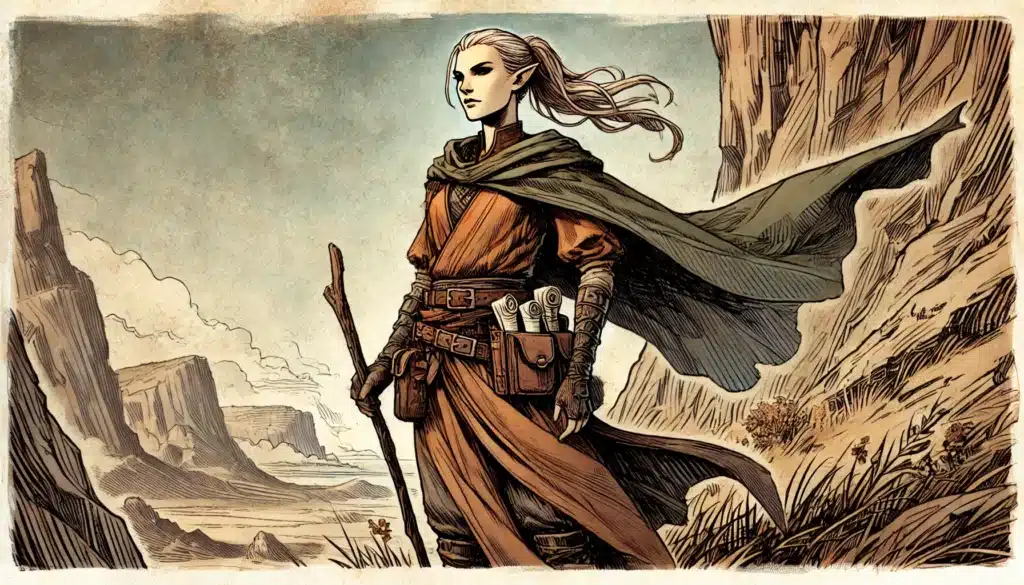
What We Know About Their Mechanics
As the sun sets on the 2014 Player’s Handbook era, the question burning hottest for many D&D veterans is: what will Khoravar actually look like from a mechanical perspective? Preview materials offer more hints than answers. The key phrase—“Eberron folk who are sometimes called Half-Elves”—signals both a connection to the past and the beginning of something new. However, the hard numbers remain tantalizingly out of reach.
Historically, Half-Elves have been the poster children for versatility and broad utility, boasting bonuses to Charisma, extra skill proficiencies, and a blend of human and elven features that made them “best in class” for bards, sorcerers, and face-of-the-party types. Whether the Khoravar will inherit this legacy is an open question. The mechanical slate appears, for now, refreshingly clean.
One burning mystery: will Khoravar keep the flexible ability score increases that made Half-Elves so adaptable, or will Eberron’s unique needs birth a more specialized design? Given the setting’s relentless focus on intrigue and shifting allegiances, anything is possible.
What about Dragonmarks—the powerful sigils that once defined Khoravar as uniquely potent? We know that feats, not species, will govern access to these features now (more on this below). Whether that means Khoravar lose any built-in magical punch remains to be seen.
Speculative and Unanswered Mechanical Questions About the Khoravar:
- Will their ability scores favor Charisma as before, or a new spread?
- Are bonus skill proficiencies still on the table?
- Will there be a new suite of unique abilities tied to Eberron-specific play (intrigue, mark detection, skyship piloting)?
- How (if at all) will innate magical features or resistance to charm/sleep effects carry over?
- Are Dragonmarks now strictly a feat option, or do Khoravar get an edge granting better access?
- Do they keep the “two worlds” culture trait, or something similar in flavor/mechanics?
- How will their stats compare to Changelings (shapeshifters) and Warforged (living constructs)?
- Will Khoravar still gain extra language options (Elvish, plus Common)?
- Does House membership impart optional abilities or social mechanics?
- Can they still straddle the line between human and elven social spheres in-game?
- Are there any new, unique Eberron-flavored abilities slated for the Khoravar?
- Will there be a shift to feat-based, rather than baked-in, mechanical variety?
For players eager to min-max, this uncertainty may be excruciating, but Eberron’s design philosophy has always been content to let narrative needs lead mechanical innovation. It’s reasonable to expect the Khoravar to land as versatile, charismatic, and capable adventurers—equally at home uncovering the city’s secrets, steering an airship, or holding court at a House conclave.
Until hard stats arrive, the savvy Eberron fan will keep one eye on ongoing previews and the other on building rich roleplay around the Khoravar’s singular lore. For now, it’s less about which numbers go up and more about what stories you want to tell—and in this new era, that’s probably as it should be.
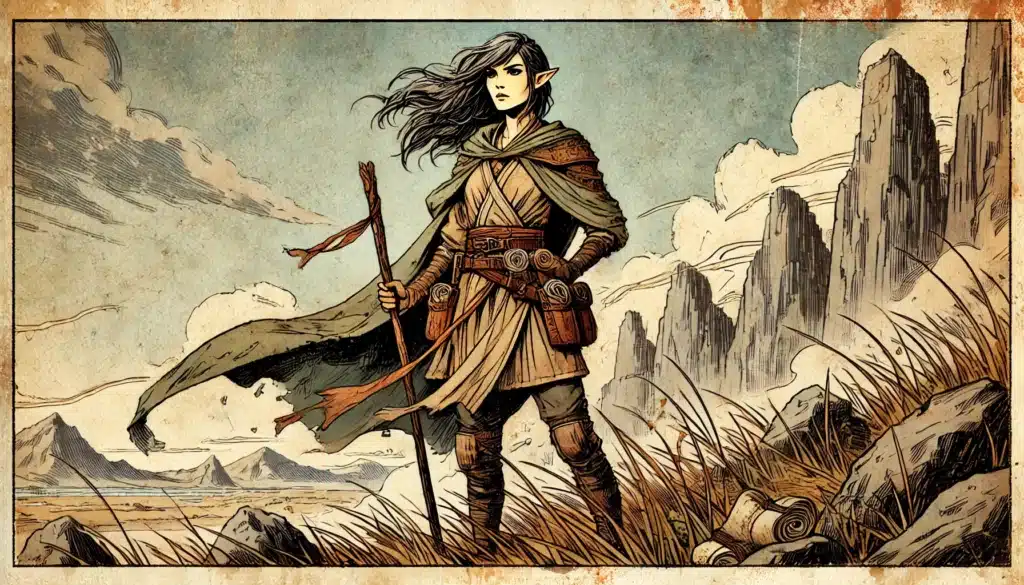
Other Updated Species in Forge of the Artificer
The Khoravar are just the opening verse in a chorus of returning Eberron species. Forge of the Artificer brings with it a major overhaul, updating not just the half-elven lineage but all the iconic Eberron-born peoples for D&D’s new 2024 direction. If you hungered for shapeshifters, psionic prodigies, or metal-and-magic war machines, this is your moment.
The four additional returning species—Changeling, Kalashtar, Shifter, and Warforged—each embody a peculiarly Eberronian twist on the archetypes familiar to D&D. Changelings are secretive shapeshifters, the ultimate infiltrators; Kalashtar are psionically attuned humans with a fragment of alien spirit; Shifters carry the blood of lycanthropes, transforming for survival or rage; and Warforged, sentient constructs, blur the line between life and artifice.
Fans are particularly eager to see how these species will be rebalanced. There’s hope for upgrades in customizability and mechanical clarity—especially since the “custom lineage” and demi-species concepts are fading from D&D’s mainstream rules. For the first time, it’s likely these species will be brought fully in line with 2024’s equality-minded framework, class flexibility, and feat-driven power systems.
What makes this revision especially tantalizing is Eberron’s strong commitment to species-defined narrative roles. Past editions showcased each species with distinctive social, magical, and existential dilemmas—will the new mechanics retain that flavor, or opt for a more generic approach? Early buzz suggests a careful balancing act: honoring history, while opening the door to all classes and builds.
⚔️ Fantasy RPG Random Tables Books
Make life as a Gamemaster easier…
If you play Dungeons & Dragons, Pathfinder, or other fantasy RPGs, this
RPG random tables series
is packed with encounters, NPCs, treasure, and more. Available in eBook or print—either way, you’ll have a wealth of adventure ideas at your fingertips.
| Species | Core Lore Identity | Likely or Rumored 2024 Update |
|---|---|---|
| Khoravar | Formerly half-elves, now a distinct Eberron species | Unique lore-focused traits, not a hybrid template |
| Changeling | Shapeshifters skilled at espionage and deception | Greater emphasis on infiltrator/face-of-party role |
| Kalashtar | Psionic humans linked to extraplanar spirits | Streamlined psionic powers, feat integration |
| Shifter | Beast-blooded folk with transformative abilities | Expanded shifting options, focus on customization |
| Warforged | Sentient golems born of magical war engines | Modernized immunities, more flexible class synergy |
Eberron’s approach to species has always been one of integration: every new culture, ability, and backstory is twined into the greater mysteries of the world. If you’ve been turned off by more generic species design lately, Eberron’s holistic style offers a dazzling counterpoint.
Now, with an overhaul guided by both new inclusivity doctrine and decades of creative momentum, Eberron stands as a vibrant showcase of what happens when worldbuilding and mechanics are allowed to dance. If you haven’t yet explored these streets of intrigue and steel, Forge of the Artificer might be the perfect invitation to return.
Dragonmarks and the End of Species-Locked Feats
Perhaps the boldest experiment in Forge of the Artificer is the reimagining of Dragonmarks. In previous Eberron books, these arcane birthmarks were jealously guarded by bloodlines—House Lyrandar’s Mark of Storm could only manifest on Khoravar, for example. Mechanically, this meant certain powers and spell access were “species-locked”—out of reach for even the craftiest adventurer unless they were born into the right House.
But the new rules swing the gates wide open. Dragonmarks are now feats—modular, optional, and accessible to any species or build. The spellcasting they grant is no longer confined to the clunky “free spell slot once per rest” mechanic; players can fuel Dragonmark spells with any available slot or cast them as rituals, dramatically expanding versatility.
This shift is as much a narrative statement as a mechanic one: in Eberron, power is about agency as much as bloodline. No longer do you need the “correct” parentage or ancestry to access the setting’s most iconic gifts. Anyone can bear a Dragonmark, given the right story justification and DM’s blessing. The world becomes broader, the stories more unpredictable.
Implications of Open Dragonmark Feats:
- Greater access to traditionally House-locked magic, including healing or storm powers
- Increased flavor and narrative flexibility—Dragonmarked characters anywhere in the world
- The ability to blend marks with any character class, producing new hybrid builds (think Warforged with a Mark of Making)
- More nuanced roleplay possibilities (cross-House intrigue, “illicit” marks)
- DMs must keep a keen eye out for overpowered combinations or feat stacking abuses
- Players can mix Dragonmark feats with Artificer, Warlock, or other classes, leading to unique synergies
- Social complications in-game—outsiders manifesting marks may face scrutiny or awe
- Potential for new subclasses and homebrew options inspired by loose Dragonmark rules
- Room for more creative backgrounds and campaign hooks (outcast, exiled, or “awakened” characters)
- Houses may become defined by culture and politics, not species exclusivity
In a stroke, this update sets a precedent for how setting-specific abilities can empower more imaginative, personalized characters. Your dwarf could wield storm magic. Your changeling, a gift for prophecy. The kingdom of “who gets to have cool powers” is now well and truly democratized.
Crucially, by removing the species lock from Dragonmarks, Wizards of the Coast bolsters the philosophy of the new edition: let lore guide, but free players to mix, match, and remix without barriers. For Eberron, it’s both a return to roots and a leap forward—a setting where story and character reign.
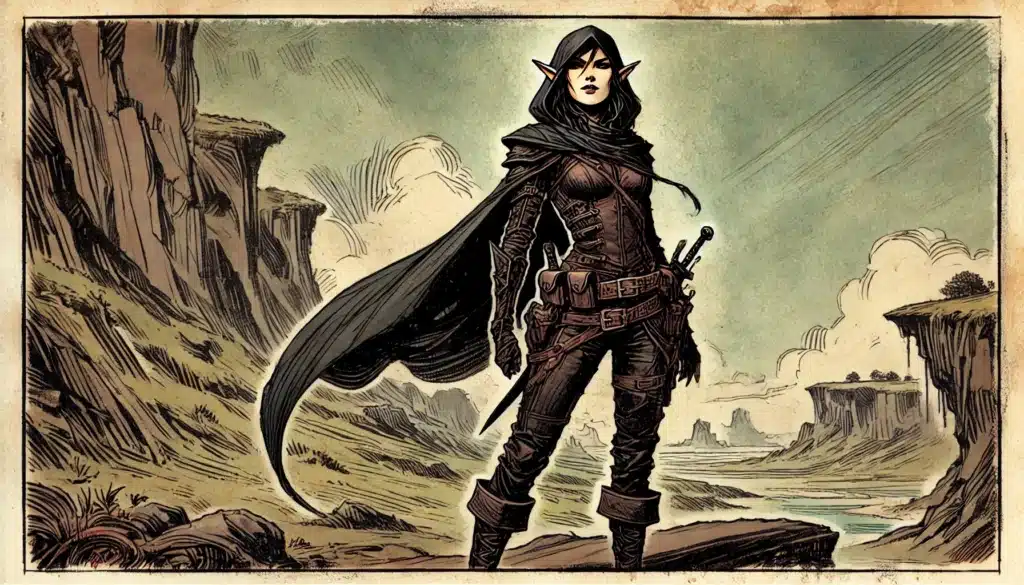
What Else Is in Forge of the Artificer?
Dragonmarks, new species, and big identity shifts aren’t the only reasons to keep your eyes on this book. Forge of the Artificer is shaping up to be one of the densest supplements for both mechanical crunch and campaign-building inspiration. Wizards of the Coast have already confirmed the inclusion of 17 new backgrounds, 28 feats, a thoroughly revised Artificer class, as well as a stable of new spells, bastions (downtime strongholds), and a menagerie of 20 new monsters.
Try my AI Tabletop RPG generators...and an extensive library of content!
One of the most tantalizing offerings is the trio of genre-based campaign templates baked into the core: fantasy noir (for your hard-boiled detectives and corrupt city officials), political thriller (for courtly intrigue, revolutions, and espionage), and pulp adventure (high-octane capers, ancient ruins, and lightning rails aflame).
This rich buffet means Forge of the Artificer isn’t just a setting update—it’s a toolkit for GMs and players to launch campaigns in the tone and style that most excites them. Whether you crave cloak-and-dagger mysteries or the raw chaos of pulp action, there’s an onramp waiting in its pages.
| Genre Name | Narrative Themes | Ideal Character Builds | Possible Story Hooks |
|---|---|---|---|
| Fantasy Noir | Mystery, corruption, moral ambiguity | Rogues, Bards, Inquisitors | Solving a murder in Sharn’s lower city |
| Political Thriller | Espionage, shifting alliances, moral dilemmas | Artificers, Warlocks, Nobles | Foiling a coup within the Dragonmarked Houses |
| Pulp Adventure | Daring escapes, ancient ruins, outrageous stunts | Fighters, Shifters, Barbarians | Stealing an artifact from a moving airship |
Given its ambitious scope, many fans have noted that Forge of the Artificer is set at a slightly lower price point and is expected to be shorter than other recent hardcovers. Yet this may prove to be a feature, not a bug. By focusing laser-like on the setting’s distinct genres and mechanics, there’s a real chance this supplement will become a touchstone for storytelling-heavy tables seeking tightly knit campaign launches.
For those who already love Eberron for its texture and taste, Forge of the Artificer looks set to add new spice. And for anyone who’s never set foot in the City of Towers or beheld a living construct with a soul, this compact, beautifully focused package may be an invitation too tempting to resist.
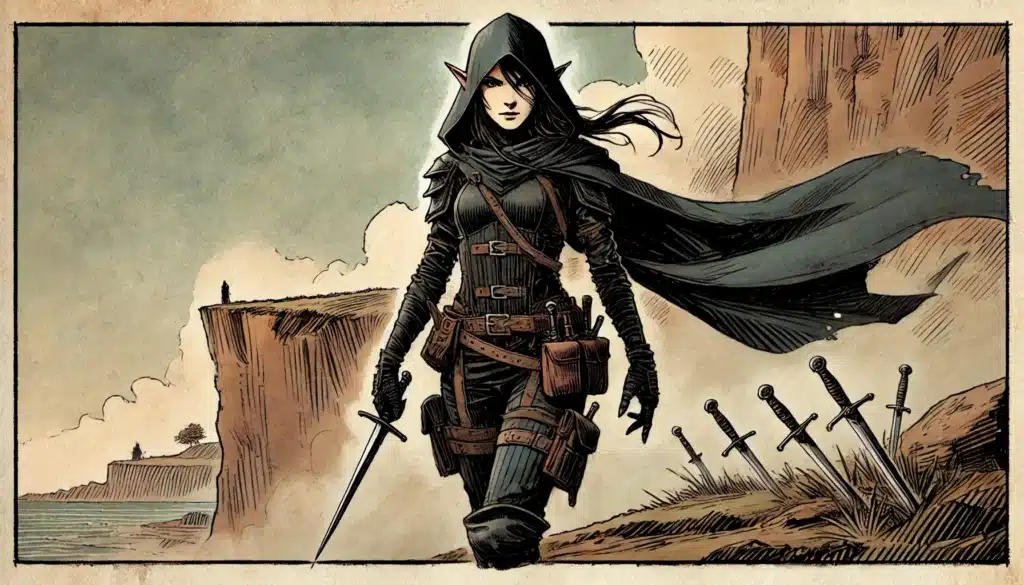
Final Thoughts on the Khoravar’s Return
There’s something quietly profound about the way the Khoravar are coming back to D&D. Not as a simple checkbox labelled “half-elf,” but as a society etched in the stones of Sharn, in the House banners that flutter from airships, and in the hearts of players who’ve long yearned for nuance over nostalgia. This is a case study in how a tabletop game can reconcile legacy with progress—honoring what works, but never clinging to what no longer serves.
For players who loved Half-Elves for their adaptability, there is a certain relief here: Eberron’s lore allows you to keep the spirit of that iconic character without the weight of terminology shaped by the wrong century. For newer gamers, Khoravar present a fresh, dynamic entry point—free from the hand-me-downs of tradition, but brimming with worldbuilding ripe for exploration.
Ultimately, the reintroduction of Khoravar is more than a rules update—it’s a metatextual gesture. It says that D&D is still the game that remembers, recalibrates, and reinvents. It seeks to be a space where your backstory matters, where your ancestry isn’t an experiment in fantasy taxonomy but the starting point for a heroic tale.
What sets Eberron apart has always been its willingness to tangle with real questions—identity, innovation, the cost and meaning of power. By letting Khoravar step out of the shadow of “halfness” and into their own light, Wizards of the Coast endorses a model every campaign setting might do well to follow: let history inform, but let the future decide.
As Forge of the Artificer lands on tables soon, keep your mind open and your character sheets ready. The Khoravar’s return is an invitation—to experiment, to challenge, and above all, to imagine boldly. The world’s greatest game endures not because it stays the same, but because, like its heroes, it dares to evolve.

